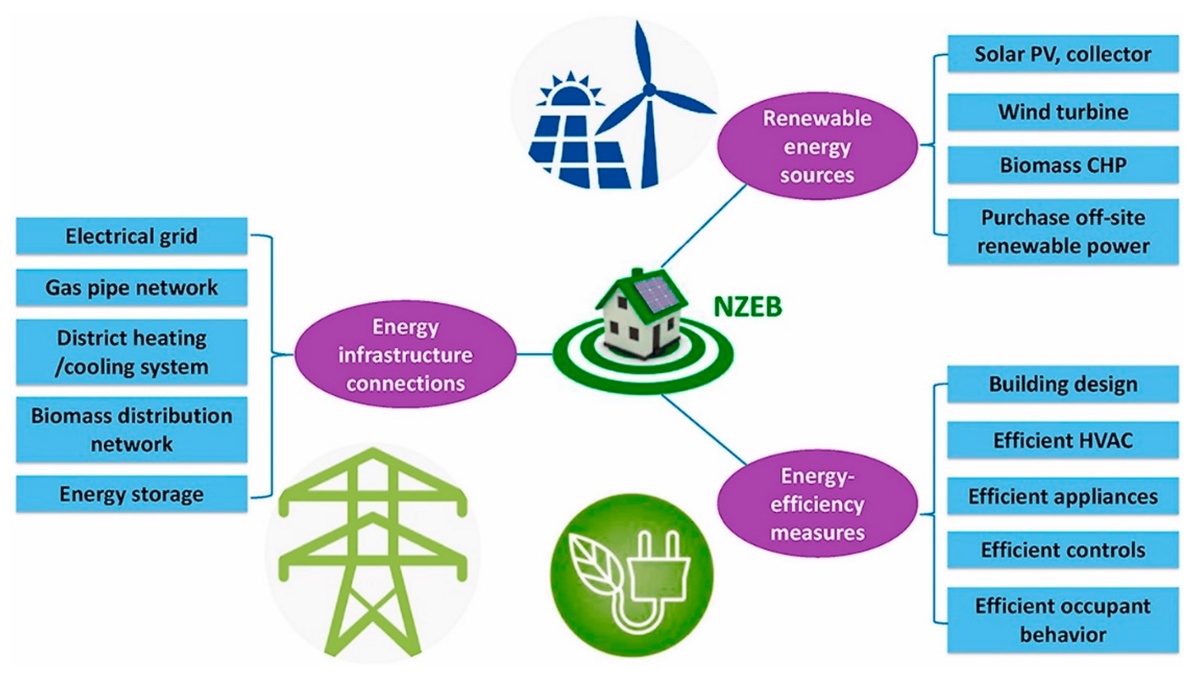The quest for sustainability is reshaping the energy landscape, where "Sustainable Synergy" emerges as a crucial concept. In fact, it is important to learn how integrating renewable energy sources into energy management systems is a necessity for a sustainable future. By weaving renewable resources into the fabric of energy management, we uncover a path towards reducing carbon footprints and enhancing energy efficiency.
This journey through the world of sustainable energy management reveals how innovation and ecological responsibility can coexist, setting new standards for energy utilisation and conservation. As we explore this synergy, the potential for a more sustainable and energy-efficient world becomes vividly clear.
The Pillars of Sustainable Synergy
The pillars of sustainable synergy, which encompass reliability, affordability, and sustainability, serve as a guiding framework for addressing the multifaceted challenges of modern energy management.
- Reliable Supply: Reliability in energy supply is crucial for ensuring uninterrupted access to power, a key component of economic stability and quality of life. Renewable energy sources, such as solar and wind, provide a significant buffer against the unpredictability and volatility inherent in fossil fuel markets.
By diversifying energy portfolios with renewables, we enhance our energy security and reduce dependency on traditional energy sources that are subject to geopolitical tensions and market fluctuations.
- Cost-effectiveness: Affordability of energy is another critical pillar, impacting both individual consumers and the broader economy. Renewable energy technologies have seen significant cost reductions over the past decade, making them increasingly competitive with conventional energy sources.
This cost-effectiveness is beneficial from a consumer standpoint and also for businesses and governments looking to budget and plan for the future.
- Environmental Stewardship: Sustainability focuses on the environmental aspects of energy production and consumption. Adopting sustainable energy practices means aligning our energy needs with ecological conservation.
This approach entails minimising our carbon footprint, reducing greenhouse gas emissions, and promoting biodiversity. Sustainable energy management emphasises the need for a balance between meeting our current energy demands and ensuring the health and viability of our planet for future generations.
Technological Innovations in Energy Management
Innovative technologies are revolutionising energy management, enhancing efficiency and sustainability at every level.
- Smart Systems
- IoT Devices:Deployment of sensors and smart metres for real-time monitoring and control of energy consumption.
- AI Optimisation:Machine learning algorithms predict energy demand, optimise grid operations and enhance efficiency.
- Blockchain for Energy: Secure and transparent transactions for energy trading, promoting peer-to-peer energy exchange.
- Energy Storage Solutions
- Advanced Batteries: Development of lithium-ion and alternative chemistry batteries for better energy storage and grid stability.
- Thermal Storage:Innovations in storing heat or cold to manage energy demand and supply, reducing peak load pressures.
- Energy Efficiency Measures
- Smart Building Technologies: Automated systems for lighting, heating, and cooling, adapting to occupancy and environmental conditions.
- Industrial Energy Optimization: IoT and AI in manufacturing processes to minimise energy use and carbon footprint.
Environmental and Economic Benefits
The intersection of environmental stewardship and economic vitality underscores the transformative impact of renewable energy integration into energy management. Here, we delve into how this synergy fosters a healthier planet and a robust economy.
- Reduced Emissions
- Transition to Renewables:Shift from coal and oil to solar, wind, and hydro, significantly cutting CO2 emissions.
- Electric Vehicles: Increased use of EVs reduces emissions from transportation, supported by a growing infrastructure.
- Economic Growth
- Job Creation in Renewables:Employment opportunities in solar and wind energy projects, manufacturing, installation, and maintenance.
- Energy Independence:Reduced dependence on imported fossil fuels, enhancing national energy security and local economies.
Powering Progress: Joining Forces for a Greener Tomorrow
The synergy between renewable energy integration and efficient energy management heralds a promising avenue for a sustainable future. This blog has unfolded the myriad benefits of renewable resources, highlighting their pivotal role in ensuring reliability and cost-effectiveness within our energy systems.
In this vein, partnering with a reputable electrical brand amplifies these benefits and ensures the deployment of quality solutions tailored for maximum impact. Such collaborations can accelerate the transition towards a greener, more resilient energy infrastructure. Let's join hands with leading industry partners to power our journey towards a sustainable future. Embrace the change, and let's build a greener world together.


No comments yet